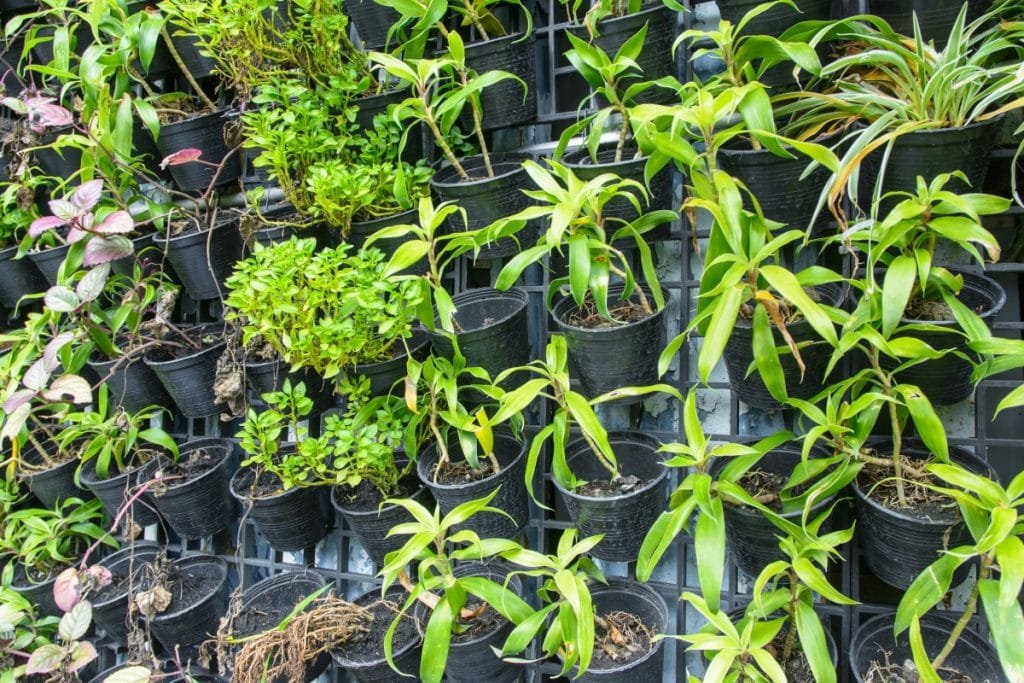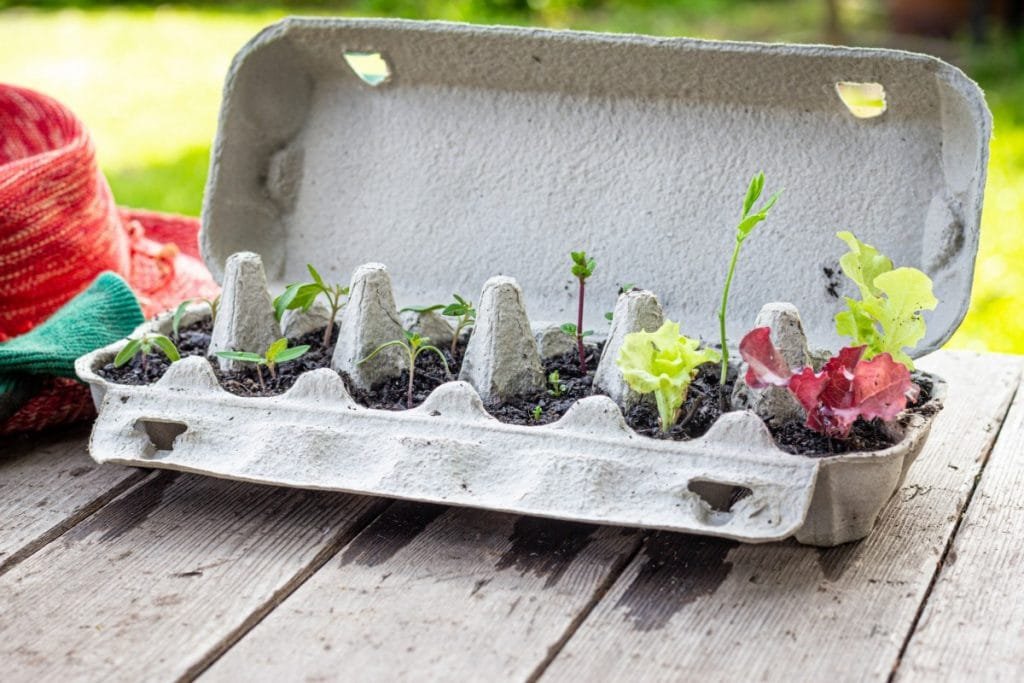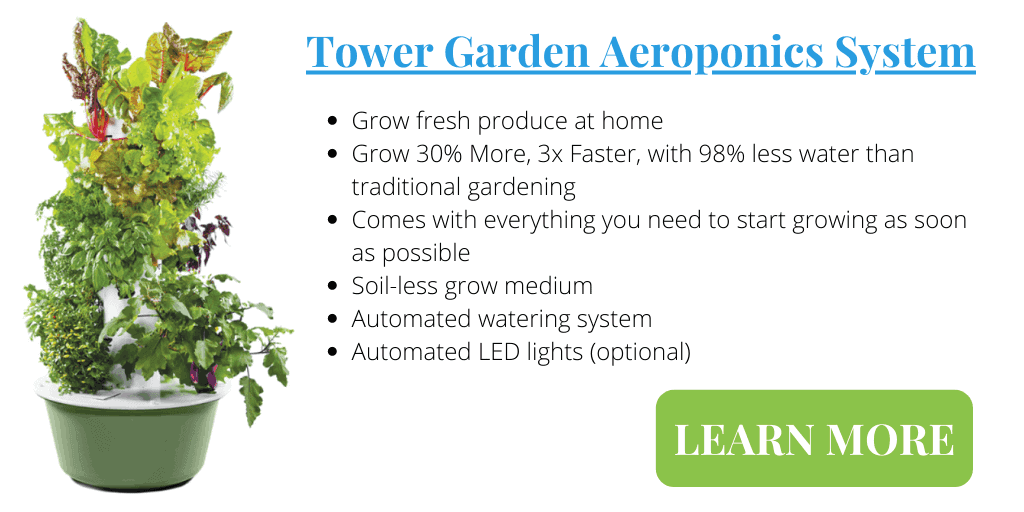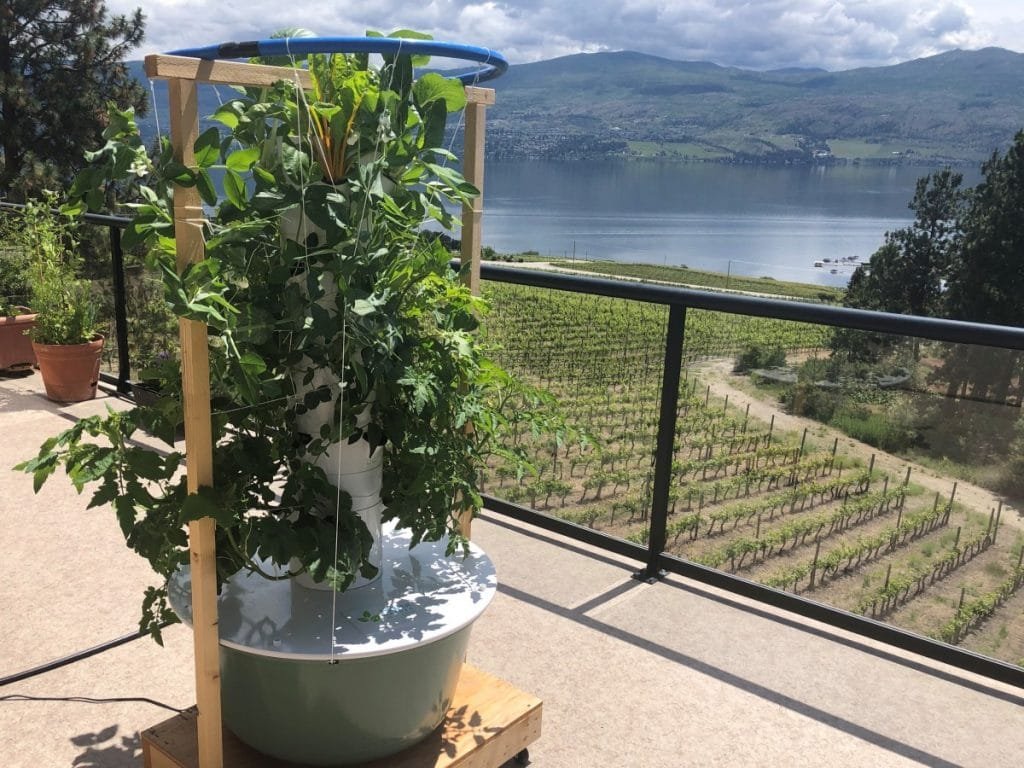Protecting your vertical garden has many different aspects. From pests to draught to adverse weather there are different things you need to consider to keep your garden healthy.
Protect your vertical garden by adding mulch to retain moisture and reduce weeds; water them correctly close to their roots. Prune, fertilize or harvest them regularly. Before frost or winter sets in, acclimatize seedlings, cover your plants to retain heat, or overwinter portable containers.
Vertical gardens need basic essential care and preventative measures just like a traditional garden to keep frost damage and nasty bugs at bay. Here I will discuss how I keep my vertical garden well cared for and free from pests and disease.

Protect Your Vertical Garden From Pests & Diseases
Pesky bugs and plant diseases are two of the biggest foes a gardener faces. They can wreak havoc if you don’t take preventive measures. Using natural products to prevent disease and deter pests is the best way to keep your plants healthy and any fruit or vegetables they produce.
How to Protect your Vertical Garden from Pests
- The hands-on approach: it’s often far easier to remove visible bugs by hand before they damage your plants or use a garden hose to remove them from a plant’s foliage.
- Attract advantages bugs: let nature take care of hazardous bugs by planting additional flowers surrounding your vertical garden to attract predatory insects like spiders and wasps that consume harmful bugs.
- Avoid using toxic synthetic pesticides: it’s normal to want to stop harmful bugs from destroying your beautiful plants. However, avoid applying toxic synthetic or broad-spectrum pesticides as they kill beneficial insects that safeguard your garden.
- Natural insect repellants: while organic insecticides that contain the likes of neem oil are far less toxic than synthetic ones, they should only be used as a last resort.
How to Protect your Vertical Garden from Disease
Plant disease is a common problem for many gardeners. While vertical gardens are less prone to plant diseases, they are sometimes vulnerable to destructive plant fungus.
When you are tending to your garden, look for spots or discolored foliage that could be tell-tale signs that a disease might be present. The best way to prevent disease is to improve airflow, reduce unnecessary moisture and keep your garden tools clean.
Follow these tried and tested suggestions to protect your plants against diseases:
- Prune plants regularly to create airflow. Good airflow between plants and leaves prevents molds and funguses from taking hold.
- Water in the early mornings. This allows the water plenty of time to absorb into the soil before the heat of the day. It also allows the foliage to dry out during the day. If you need to water at night, focus on watering the roots and not the foliage.
- Wash your pruning scissors in soapy water afterward to stop diseases from spreading to other plants. Dirty garden tools like pruning shears are one of the main ways disease spreads from plant to plant.
- Don’t compost diseased plant cut-offs; rather, throw them in a sealed bag and place them in the garbage.
- Use new, sterile soil to repot hanging baskets or container plants.
Protect Your Outdoor Vertical Garden From Frost Damage
Late spring and early fall frosts are a seasonal fear of northern gardeners. It is heartbreaking to have new seedlings or mature plants damaged by frost. Fortunately, there are several ways to protect your plants from frosts.
The direction your vertical garden faces can also affect how prone it is to frost damage. Learn more in my article, What Direction Should a Vertical Garden Face?
Acclimatize Your Seedlings
If you are in the process of growing new plants from seeds for your vertical garden, they need to be prepared for the great outdoors.
Fragile seedlings that have been grown in an indoor, sheltered environment are incredibly vulnerable. Dramatic temperature changes during the onset of frost could damage them if they are not properly acclimatized.
Seedlings need gradual, limited exposure to the outdoors over a period of a week. They need to be able to withstand the potentially damaging effects of excessive rain, wind, sunlight, and frosts before they are planted.
By introducing them slowly they will get used to their new harsher outdoor environment. When growing your seedling it helps to have a small fan on them to strengthen the stalks. This way a small breeze outside won’t knock your little plants flat.

Keep An Eye On The Weather
Pay close attention to weather forecasts during the spring and fall. While keeping an annual frost calendar for your region might be helpful, they are not always accurate. Having a plan for frost is all well and good but if it sneaks up on you then all your careful planning will be useless.
Knowing when frosts are expected will dictate when you can transplant, how much you need to water, and when you would need to protect your vertical garden plants from frosts.
If there is an unforeseen onset of frost in spring, your sun-loving basil and pepper crops could get damaged, so it would be wise to prepare for the onset of frost.
Watering In Preparation For The Onset Of Frost
Watering your plants well can help prevent frost from taking hold. Damp soil acts as a heat insulator as it will not freeze as quickly compared to dry soil. Well-hydrated plants will also be better prepared to withstand the shock of a dramatic temperature change.
Most importantly, water your vertical garden in the morning to allow for the water to be absorbed before frost is expected the following day. However, ensure that your plants are not overwatered and that their foliage remains dry.
Cover Your Outdoor Vertical Garden
If it is not possible to shelter your outdoor vertical garden from impending frost, simply cover your vulnerable plants to retain heat and shield them from icy air.
The best part is that you don’t have to spend a small fortune on plant covers as you can use anything that you might have on hand, like blankets, old sleeping bags, or bed sheets.
Other cheap DIY options include storage containers and buckets that have been turned upside down to cover bigger plants for smaller plants cut openings in old milk jugs or soda bottle containers.
You can also purchase a roll of fleece horticultural frost covers that are easy to cut to size and provide various protection levels in frosty conditions. Alternatively, consider using domed plastic Cloches to protect individual plants.
Another great option for raised garden beds is using small cold frames that resemble little greenhouses made from see-through glass or plastic structures.
- 【10FT X 30FT Rectangular Plant Cover】Sunpro plant cover measures 10x30ft, providing ample...
- 【All-Purpose Floating Row Cover】Sunpro floating row cover is made from lightweight,...
- 【Best Freeze Cloth for Outdoor Plants】Sunpro extra-stable plant blanket retains warmth...
Alternatively, you can simply use a plastic sheet or bubble wrap to protect your vertical garden if it is adjacent to an interior wall that is not insulated to retain heat.
However, if you require additional protection, install good old-fashioned Christmas lights along your vertical garden wall as they will provide additional heat. For living walls, install incandescent lights that face upwards before frost sets in, like Christmas lights; it will add additional heat and add to the wall’s aesthetic appeal. For both these options, you need incandescent or halogen lights not LEDs. LEDs do not produce any heat.
Living walls are a great addition to any space but how long plants last is a common question. Find the answer to this question and more in my article, How Long Do Living Walls Last?
When we were expecting frost in the fall with our Tower Garden, we draped a tarp over the top of the Tower to protect the cold air from touching the plants. This worked well for protection from a mild frost.

Preparing Your Vertical Garden For Winter
Fortunately, most vertical garden structures for living walls or tiered planters don’t require a lot of maintenance before winter sets in. Especially if you choose indigenous plants that can withstand cold winter periods.
However, should your vertical garden grow in free-standing mobile planters, it would be wise to consider the following winter season risk-mitigating measures:
- Move all your vertical portable structures like Tower Gardens, Garden Towers, picture frames, or hanging baskets indoors where they will be protected from the elements.
- Overwinter perennials in their containers in an unheated, enclosed area like a shed, garage, or barn to extend their lifespan in preparation for summer.
- If you are planning on repotting your vertical garden in spring and would like to leave the containers outside in winter, remove all their potting soil. Any remaining potting soil will otherwise freeze and damage your planters.
Most plants enter a dormant phase during the winter in outdoor and indoor environments. It is a crucial phase in their development as it gives them time to rest, which in turn stimulates their growth. The dormant winter period is also highly beneficial for neglected plants that are not in great condition.
Vertical Garden Protection & Care: Tips & Tricks
Protecting a vertical garden is all about proper maintenace and care. Keeping your plants properly hydrated, fertilized and maintined is important to proper garden health.
Keep Your Vertical Garden Well Hydrated
Any avid gardener who has lost a few precious plants will tell you that figuring out how much water a plant needs is not always that straightforward, as they all have their unique requirements.
Here are five watering hacks to protect your vertical garden:
- Use the correct watering technique: if you are watering your vertical garden by hand, water them at their roots and not from the top. Watering plants at the bottom of their stems will prevent mildew and pesky funguses from damaging your plant’s foliage and keep weeds at bay.
- Watering frequency: a great rule of thumb is to water your vertical garden properly and to saturate the soil as it will prompt vigorous root growth and require less frequent watering. Therefore, avoid lightly watering it every second day.
- Optimal drainage: ensure that all your hanging planters or baskets have adequate drainage to protect your plants from overwatering and root rot.
- Add mulch to your containers: if you want to retain moisture, especially in hot climates where the sun takes its toll.
- Hassle-free watering: the addition of irrigation equipment like drip irrigation systems or soaker hoses, coupled with a digital timer, will save you a lot of time in the long run. So, you can finally sit back and enjoy the fruits of your labor.
One reason I love using a Tower Garden is that it takes the hassle out of watering. It is an aeroponic system that uses a timer to automatically drip water over the roots of the plants at regular intervals. Learn more about my favorite vertical garden in my article, What is a Tower Garden and How does it work?

Fertilize Your Vertical Garden Regularly
Vertical gardens are solely reliant on us to meet their nutritional needs, so it’s of vital importance that you use a good quality organic kelp or slow-releasing fertilizer on a regular basis to build up the soil, especially during their growing phases.
If you like using a soil based vertical garden, consider the Garden Tower. It is a tower-style planter that incorporates compost and vermiculture (worms) to provide nutrients to your plants. You can easily dispose of your food wastes and feed your plants at the same time.
Weed Your Vertical Garden
Weeds are an on going battle for all soil based gardens. It’s important to keep the weeds at bay so they don’t steal vital nutrients and space from your plants.
Weed fabric is not always effective, so rather, add a thick layer of sopping wet newspaper or cardboard at the base of your plant before adding a 3–4-inch layer of good quality mulch to stop weeds in their tracks.
Prune, Pinch & Deadhead Flowers in Your Vertical Garden
It’s imperative to remove wilted flowers and prune woody branches or superfluous vines regularly if you want to promote healthy growth. Alternatively, you can pinch unruly pieces to retain a plant’s desired shape.
By pruning and removing dead parts of the plant, your plant will have more energy to put into new growth and produce fruits. Damaged and dying parts of a plant provide a weak point to allow disease to take hold. Pruning away these unhealthy parts of the plant, with clean garden shears, will help prevent disease.
Regularly Harvest Your Vertical Garden
Growing veggies or herbs in a vertical garden is amazing. The more you harvest to more your plant will produce.
By taking the ripe fruit and trimming the leaves of herbs your plants will keep producing more and create an even larger harvest.
Final Thoughts
Vertical gardening is a game-changer for those with small spaces. While many of the ways you protect your vertical garden are similar to those of a traditional garden many feel, including myself, that vertical gardening is easier.
Container planting in general is easier to protect plants from nasty bugs, typical plant diseases, and during freezing winters. But they are wholly reliant on your loving care to thrive.

